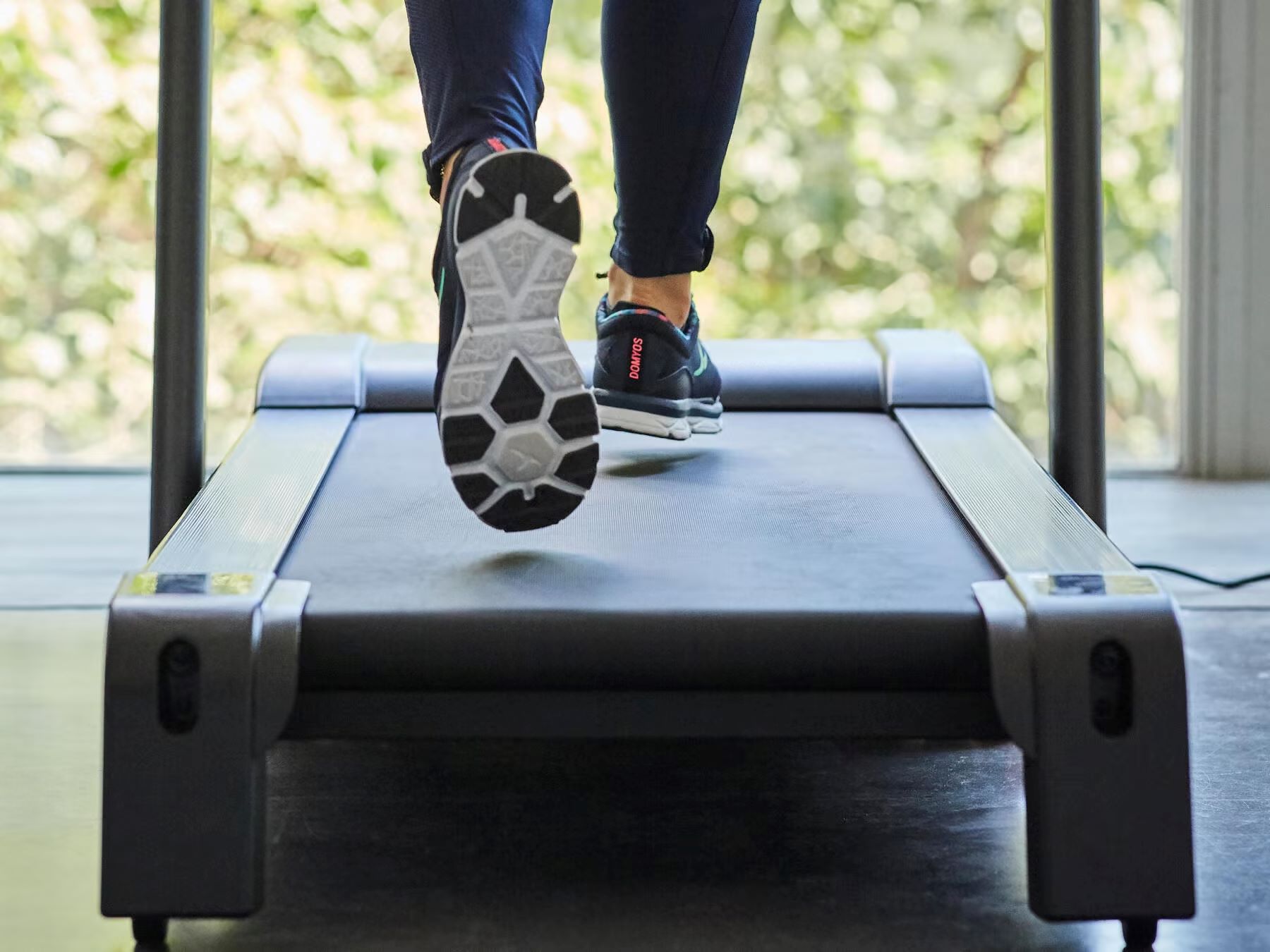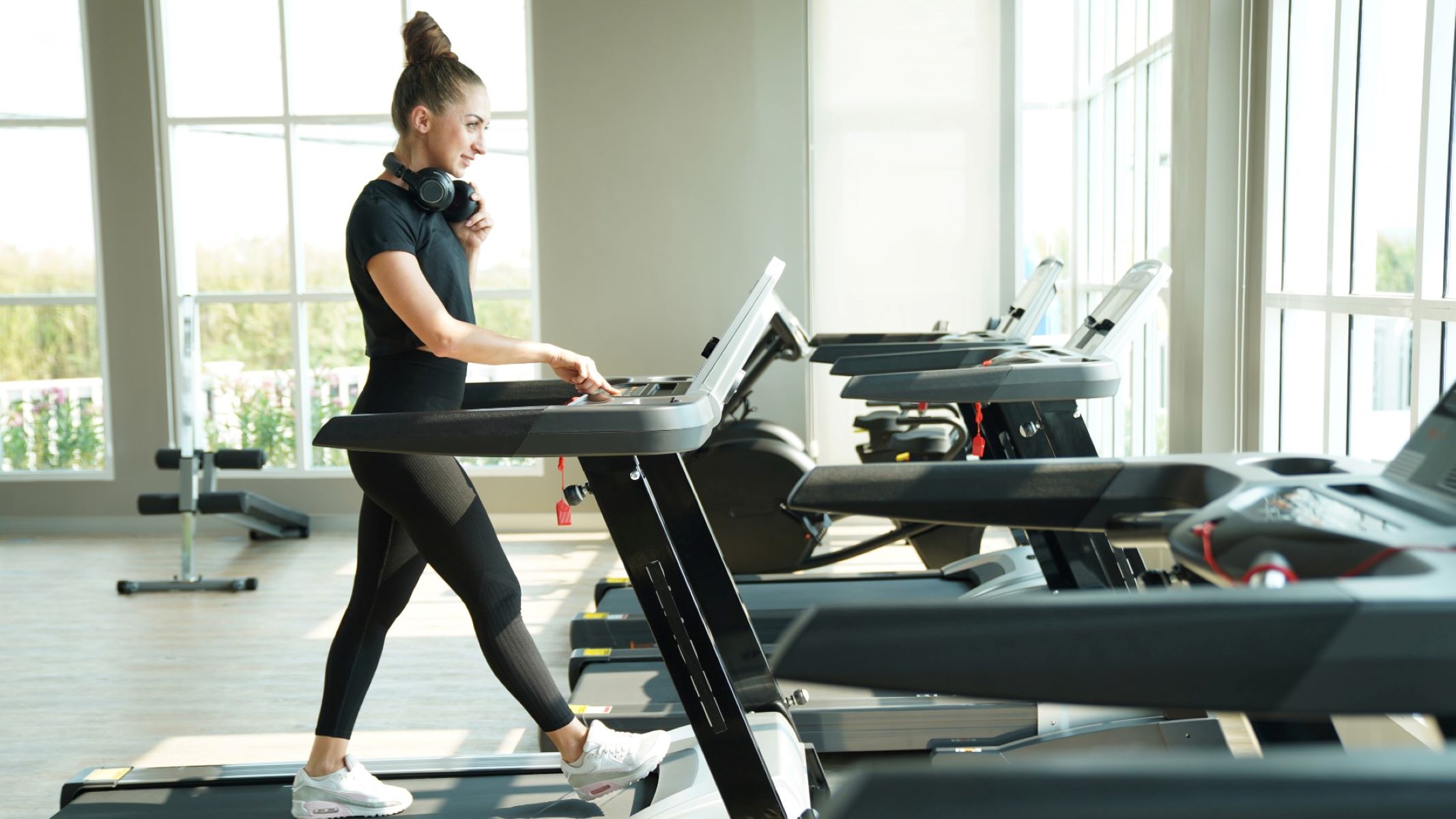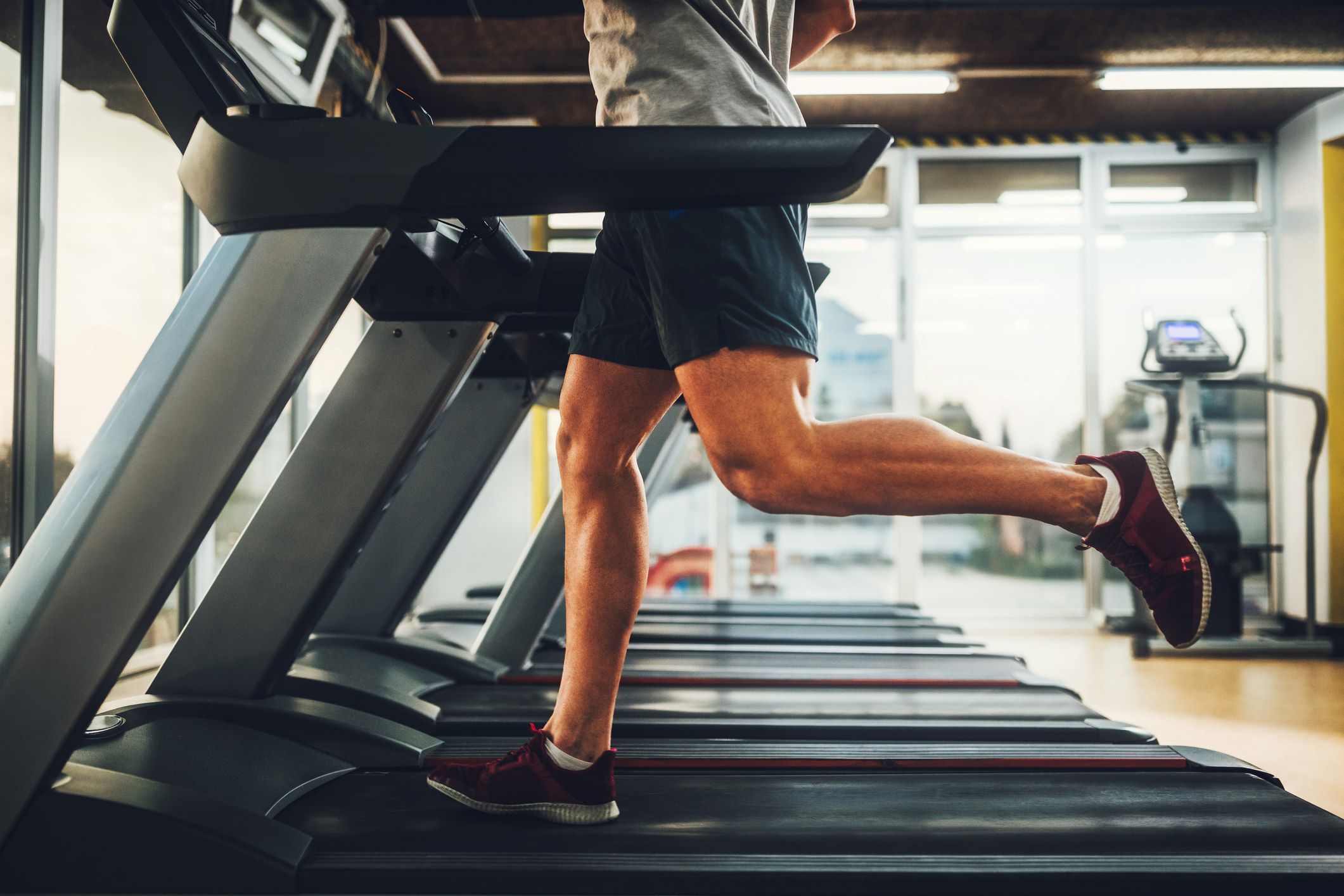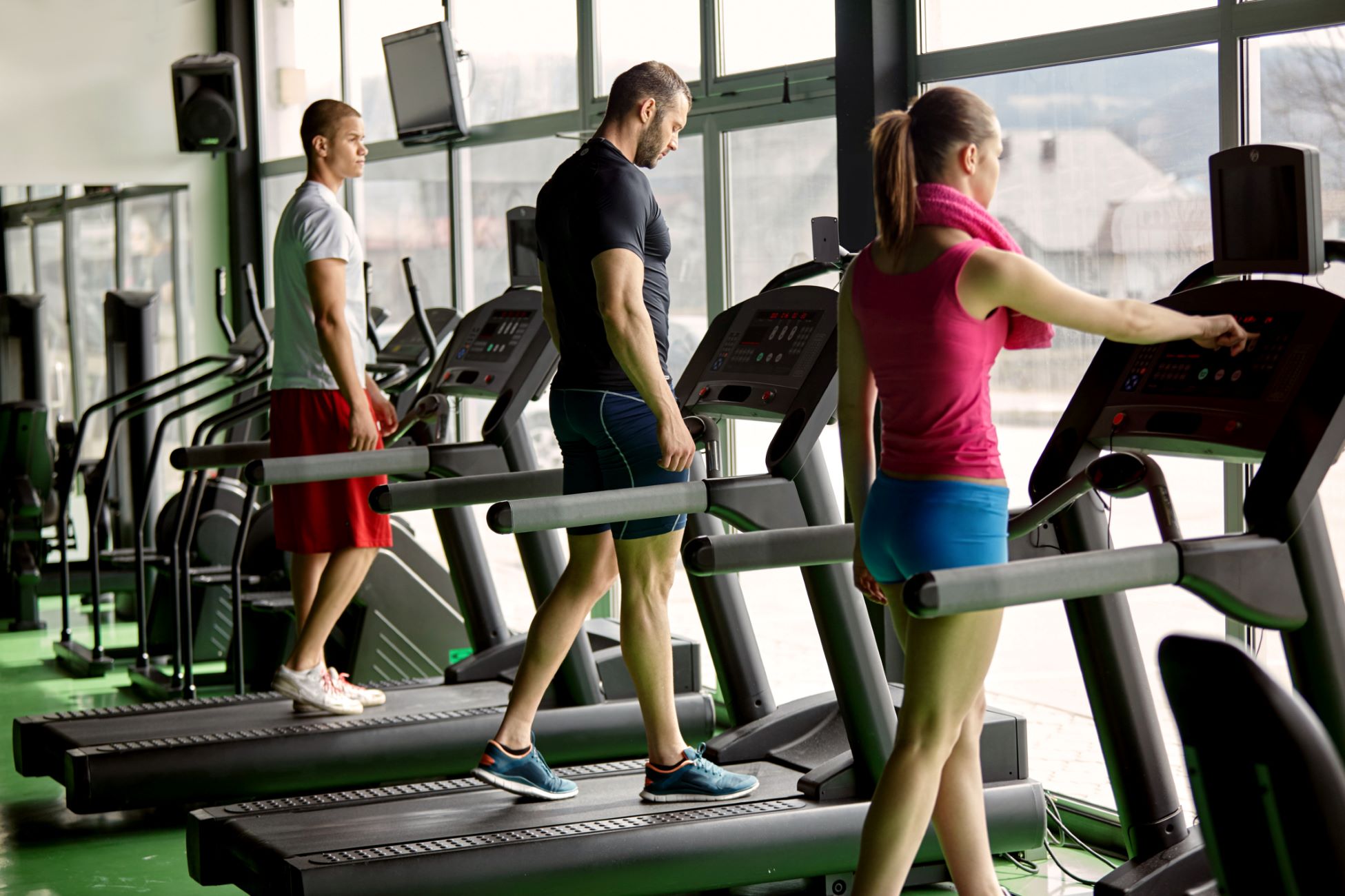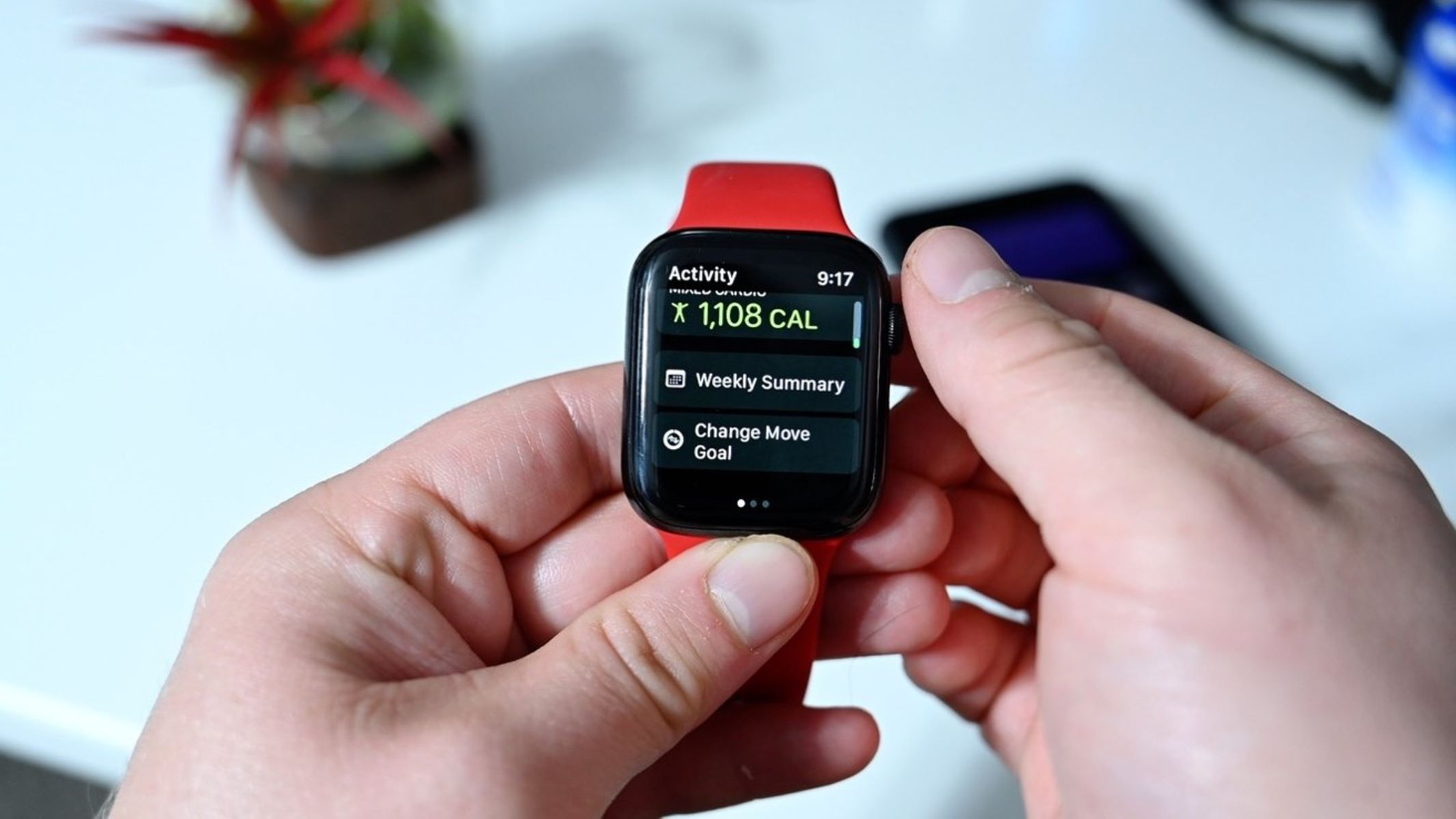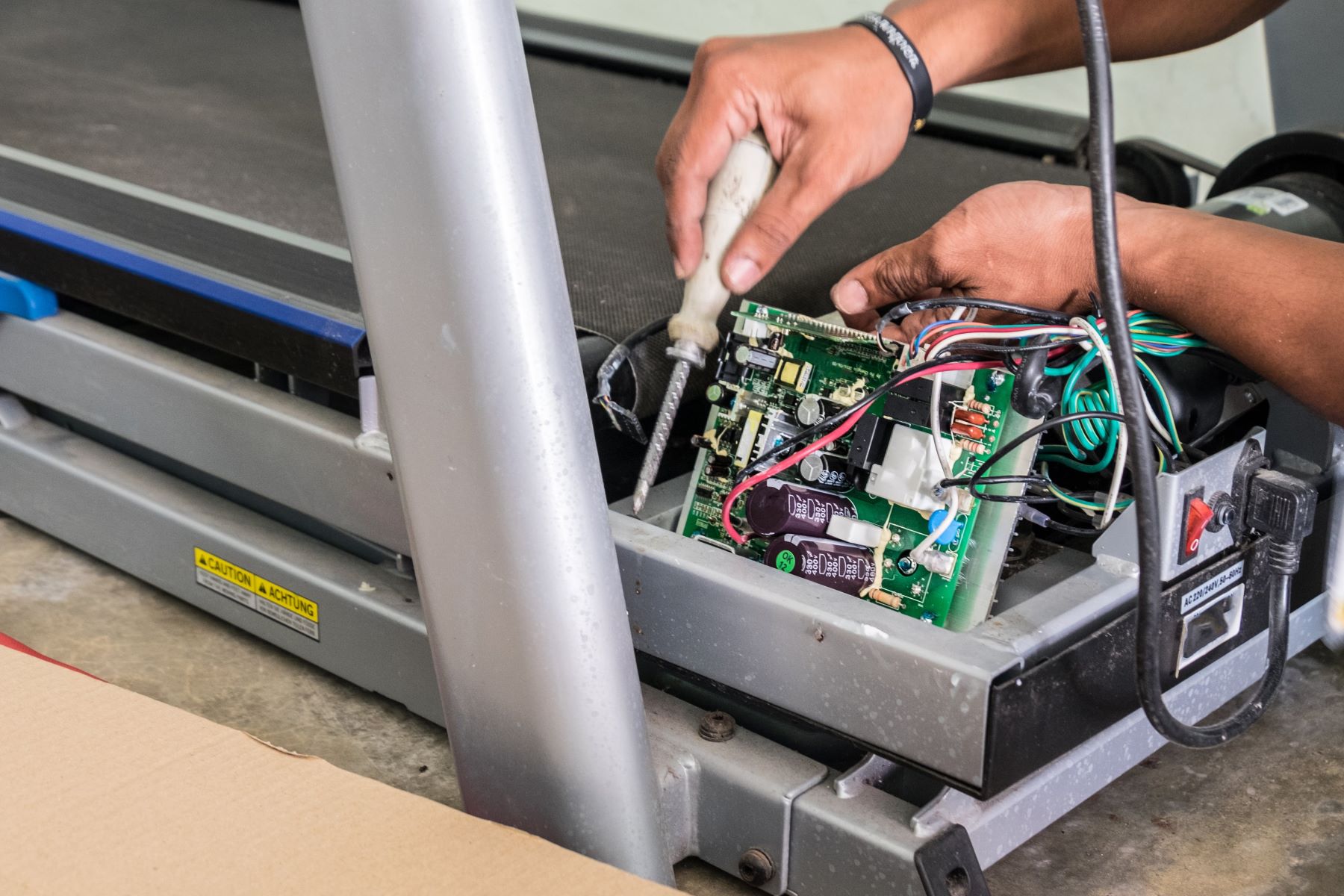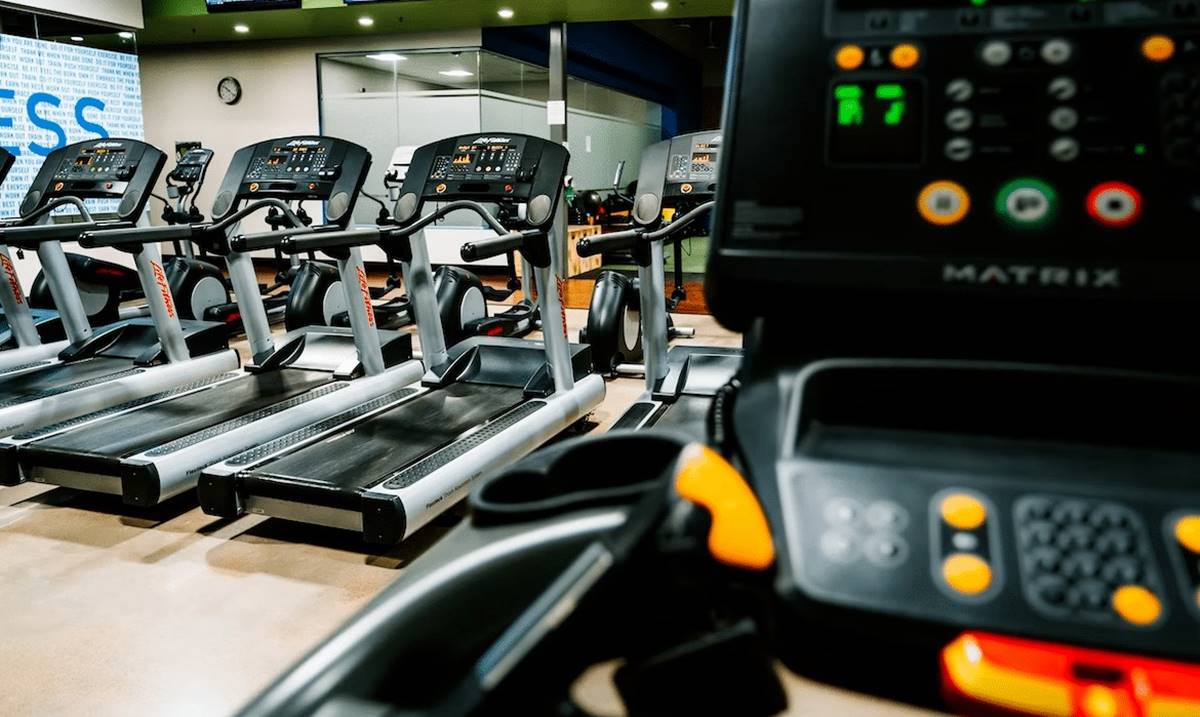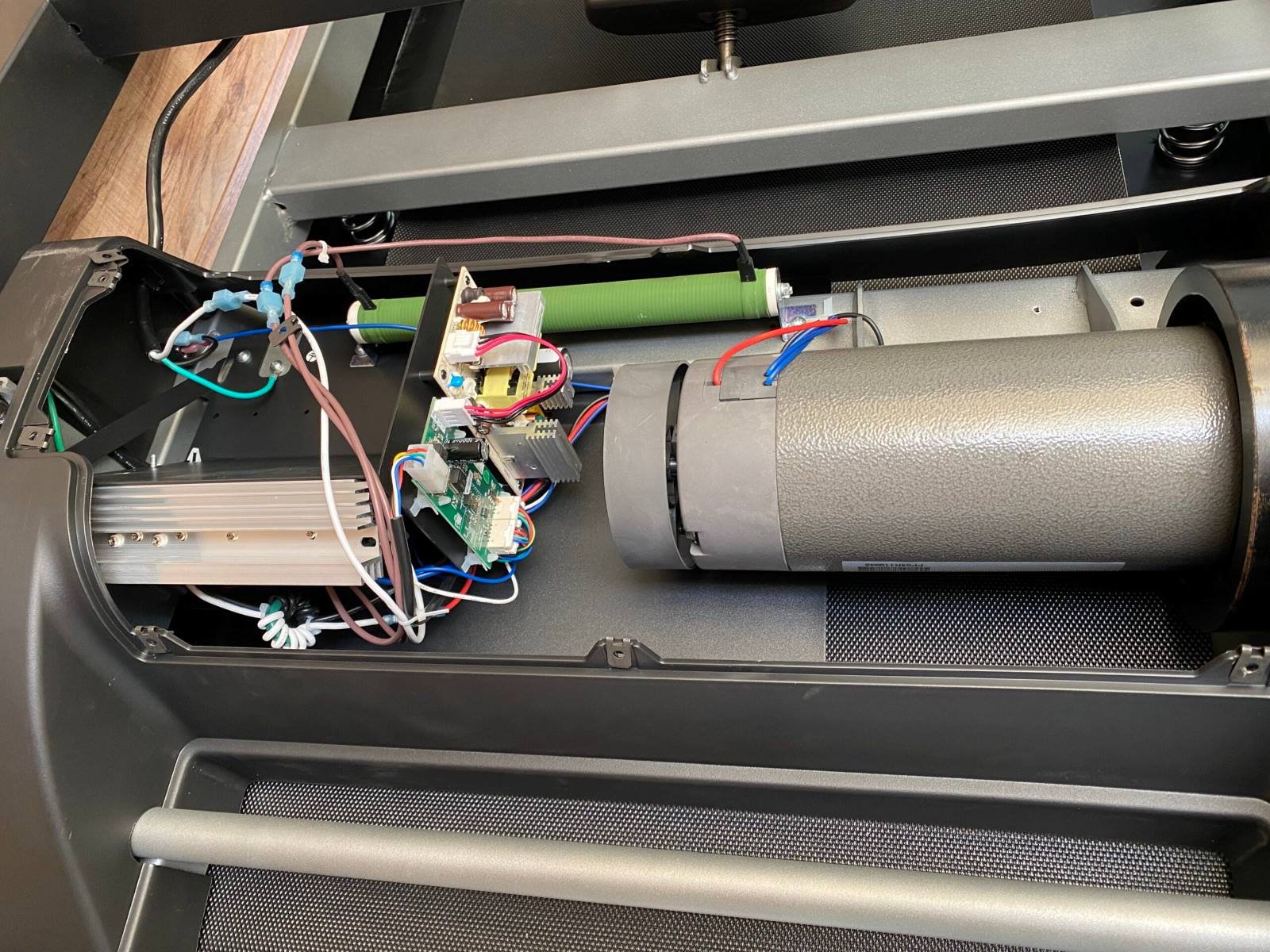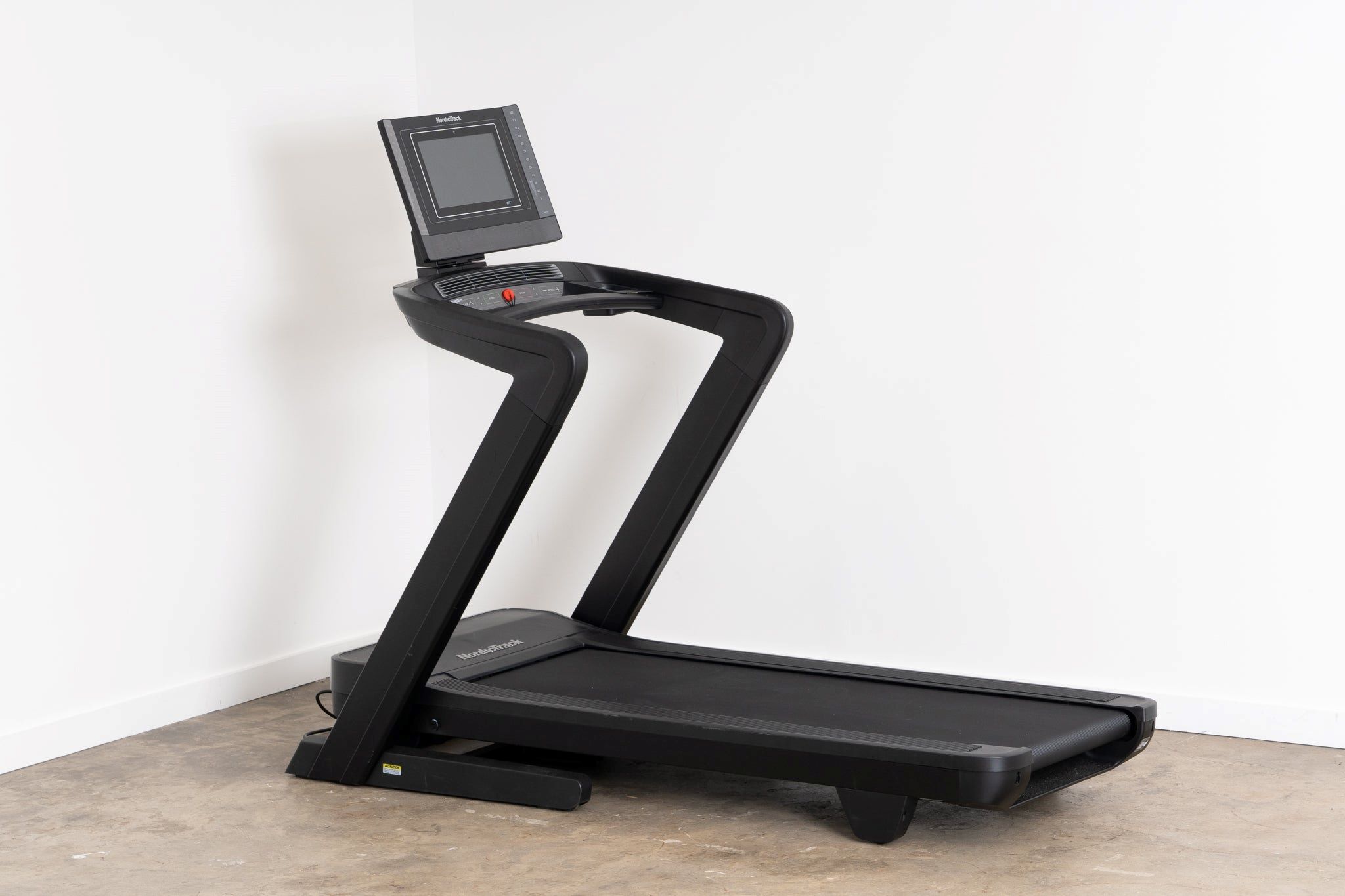

Featured
What Is A Treadmill
Modified: August 21, 2023
Discover the benefits of using a treadmill in your fitness routine. Our featured treadmills offer advanced features for an effective workout at home or in the gym.
Introduction
Welcome to the world of fitness and exercise! Whether you are a seasoned fitness enthusiast or a beginner looking to embark on a healthier lifestyle, you’ve likely come across the term “treadmill”. Treadmills are a popular piece of exercise equipment that can be found in gyms, fitness centers, and even in the comfort of your own home.
A treadmill is a versatile machine that allows you to walk, jog, or run in a controlled environment. It consists of a moving surface, typically a conveyor belt, which is powered by an electric motor. This enables you to simulate the experience of running or walking outdoors, all while staying in one place.
The treadmill has a long and fascinating history, dating back to ancient times. In fact, the origins of treadmill-like devices can be traced back to the Romans, who used a form of treadmill as a means of punishment. Prisoners would be forced to walk on a large wheel, which would turn a millstone or pump water.
However, it wasn’t until the 19th century that the modern treadmill was invented. Originally designed for agricultural and industrial purposes, it wasn’t long before the treadmill was recognized for its potential as a fitness tool. Since then, the treadmill has undergone numerous advancements and is now a staple in the fitness industry.
There are several types of treadmills available on the market today, each with its own unique features and benefits. The most common types include manual treadmills, motorized treadmills, folding treadmills, and commercial treadmills. Depending on your needs and preferences, you can choose the one that best suits your fitness goals.
Using a treadmill offers a multitude of benefits for your physical and mental well-being. It provides a convenient and accessible way to exercise, regardless of the weather or time constraints. Treadmill workouts can help improve cardiovascular health, increase endurance, burn calories, and even relieve stress. Whether you prefer a brisk walk or an intense run, the treadmill allows you to customize your workout to suit your fitness level.
However, it is important to use the treadmill with caution and follow safety precautions to minimize the risk of injury. It is recommended to start with a warm-up and cool-down session, to use proper form and technique, and to avoid overexertion. Additionally, it is crucial to choose the right treadmill that meets your specific needs and to maintain it properly for optimal performance and longevity.
So, if you’re ready to take your fitness journey to the next level, consider incorporating a treadmill into your exercise routine. By doing so, you can enjoy the convenience, versatility, and numerous benefits that this amazing piece of equipment has to offer.
Definition of a Treadmill
Before we delve deeper into the world of treadmills, let’s start by understanding what exactly a treadmill is. In simple terms, a treadmill is a piece of exercise equipment that allows individuals to walk, jog, or run in a controlled and stationary environment.
At its core, a treadmill consists of a moving surface, typically a conveyor belt, which is powered by an electric motor. This surface is designed to simulate the experience of walking or running on solid ground, while providing cushioning and adjustability to suit individual preferences. Most treadmills also include a control panel that allows users to adjust speed, incline, and other settings to customize their workout.
Treadmills are widely used for both home and commercial purposes, providing individuals with a convenient way to engage in cardiovascular exercise without the need for outdoor spaces or specialized equipment. They offer users the ability to exercise at their own pace, regardless of weather conditions or time constraints.
One of the greatest advantages of treadmills is their versatility. Whether you are a beginner looking to start a walking routine, an experienced runner training for a marathon, or someone looking to burn calories and improve overall fitness, a treadmill can cater to a wide range of fitness goals and fitness levels.
Additionally, treadmills often come equipped with various features and programs that can enhance the overall workout experience. These may include preset workout programs, heart rate monitors, built-in speakers, and even compatibility with fitness apps and devices.
It is important to note that treadmills can vary in terms of size, quality, and price. There are models available for every budget and requirement, from basic manual treadmills to high-end commercial models designed for intensive use in fitness centers and gyms.
Overall, treadmills have become a popular choice for those seeking a convenient, effective, and enjoyable way to incorporate cardio exercise into their daily routine. Whether you prefer a leisurely walk, a challenging hill climb, or an intense sprint, a treadmill can be a valuable tool in helping you achieve your fitness goals.
History of Treadmills
While treadmills may seem like a modern invention, the concept of a treadmill-like device can be traced back thousands of years. The earliest known predecessor of the treadmill dates back to the Roman Empire, where it was used as a means of punishment rather than exercise.
In ancient Rome, prisoners would be sentenced to hard labor, and one of the tasks assigned to them was to turn a large wheel. This large wheel, known as a treadwheel or treadmill, was often used to power mills or lift heavy objects. The prisoners were forced to step on the horizontal treads of the wheel, causing it to rotate as they walked. This laborious task was seen as a form of punishment and was used in various industries, including grinding grain and drawing water from wells.
Fast forward to the 19th century, and the treadmill underwent a significant transformation. It was during this time that treadmills started to be recognized for their potential as exercise machines. The first prototypes were developed in England in the early 1800s, primarily as devices to aid in the rehabilitation of prisoners and soldiers.
One notable early version of the treadmill, known as the “perpetual prison mill,” was invented in 1818 by Sir William Cubitt. This treadmill was used in English prisons and required prisoners to continuously step on the moving treads, often for long periods of time. The purpose was to not only keep the prisoners occupied but also to provide them with physical exercise as a means of punishment and reform.
As the concept of fitness and exercise gained popularity in the 20th century, treadmills started to make their way into the civilian fitness world. Initially, they were primarily used as diagnostic tools in medical settings to monitor cardiac and pulmonary function. However, it wasn’t long before treadmills began to find their place in gyms and homes, offering individuals a way to engage in indoor cardiovascular workouts.
Since then, the design and technology of treadmills have evolved rapidly. Early models were often bulky and had limited features. However, advancements in engineering and electronics have allowed for more compact and sophisticated designs. Today, treadmills come equipped with various features such as adjustable speed and incline, heart rate monitors, and built-in workout programs to cater to individual user preferences and fitness goals.
Overall, the history of treadmills is a fascinating journey from its origins as a form of punishment to its transformation into an indispensable fitness tool. It is a testament to human ingenuity and the desire to improve physical well-being through innovative means.
Types of Treadmills
Treadmills come in various types, each offering unique features and benefits to cater to different fitness needs and preferences. Understanding the different types can help you choose the right treadmill that suits your fitness goals and lifestyle.
1. Manual Treadmills: Manual treadmills are powered by the user’s own movement. They do not have a motor and rely on the user’s effort to move the belt. These treadmills are typically more affordable and compact, making them a popular choice for individuals with limited space or a tight budget. However, they require more effort to keep the belt moving, making them ideal for walking or light jogging rather than high-intensity running.
2. Motorized Treadmills: Motorized treadmills are the most common type of treadmill and are powered by an electric motor. The motor drives the movement of the belt, allowing for adjustable speed settings. Motorized treadmills offer more features and flexibility compared to manual treadmills. They are suitable for a wide range of fitness levels, allowing users to walk, jog, or run at different speeds and incline levels.
3. Folding Treadmills: Folding treadmills are designed to save space when not in use. They feature a folding mechanism that allows them to be compactly folded and stored vertically or horizontally. This is particularly useful for those with limited space in their homes or apartments. Although folding treadmills may not be as robust or as sturdy as non-folding models, modern designs have improved their stability and durability.
4. Commercial Treadmills: Commercial treadmills are heavy-duty machines designed for use in gyms, fitness centers, and commercial settings. They are built to withstand frequent and intensive use. Commercial treadmills typically have higher weight capacities, larger running surfaces, and more advanced features compared to residential models. These treadmills are suitable for fitness professionals, serious athletes, and individuals who want the utmost durability and performance.
5. Specialty Treadmills: Specialty treadmills are designed for specific fitness purposes. They include features like incline trainers, which have steeper incline settings to simulate uphill running and engage different muscle groups. There are also curved treadmills, which have a curved running surface that is self-powered, providing a more intense workout and mimicking the natural stride of outdoor running.
When choosing a treadmill, consider factors such as your fitness goals, available space, budget, and desired features. It’s essential to assess your needs and preferences to find the right type of treadmill that will provide you with a satisfying and effective workout experience.
Benefits of Using a Treadmill
Using a treadmill as part of your fitness routine offers numerous benefits for your physical and mental well-being. Whether you are a beginner looking to improve your cardiovascular health or a seasoned athlete training for a marathon, incorporating a treadmill into your workouts can help you achieve your fitness goals. Here are some key benefits of using a treadmill:
1. Convenience: One of the biggest advantages of using a treadmill is the convenience it offers. Regardless of the weather conditions or time constraints, you can hop on the treadmill and get your workout done. You don’t need to worry about navigating outdoor terrain or dealing with traffic, making it a time-saving and hassle-free option.
2. Cardiovascular Health: Treadmill workouts are an effective way to improve cardiovascular fitness. Regular treadmill exercise helps strengthen your heart, increases lung capacity, and improves blood circulation. It can lower the risk of heart disease, high blood pressure, and other cardiovascular conditions.
3. Burn Calories: Treadmill workouts are excellent for calorie burning and weight management. Depending on your intensity level and body weight, running or walking on a treadmill can help you burn a significant number of calories. It’s a great option for those looking to shed extra pounds or maintain a healthy weight.
4. Flexibility in Intensity: Treadmills offer the ability to adjust the speed and incline, allowing you to customize the intensity of your workout. Whether you want a brisk walk, a challenging hill climb, or a fast-paced run, you can make the necessary adjustments with just a touch of a button.
5. Joint-Friendly: Treadmills provide a cushioned surface that reduces the impact on your joints compared to running or walking on hard pavement. This makes it an ideal choice for individuals with joint issues or those recovering from an injury.
6. Consistency and Progress Tracking: Treadmills often come with built-in features that allow you to track your progress. You can monitor your speed, distance, time, and even heart rate during your workout. This helps you stay motivated and allows for consistent progress and improvement over time.
7. Mental Well-being: Exercise, including treadmill workouts, has a positive impact on mental health. It helps reduce stress, anxiety, and depression by releasing endorphins, also known as “feel-good” hormones. The rhythmic motion and focus required during treadmill workouts can also be meditative and provide mental clarity.
Remember, it’s important to start slowly and gradually increase the intensity of your treadmill workouts. Warm-up before your session and cool down afterward to prevent injuries. Consulting with a fitness professional can help you design a personalized treadmill program that aligns with your goals and fitness level.
With all these benefits in mind, incorporating a treadmill into your exercise routine can be a game-changer in achieving your fitness aspirations.
Safety Precautions while Using a Treadmill
While treadmills are generally safe to use, it’s important to prioritize your safety and take necessary precautions to prevent accidents or injuries. Here are some essential safety guidelines to follow when using a treadmill:
1. Warm-up and Cool Down: Before getting on the treadmill, it’s crucial to warm up your muscles with some light cardio exercises and dynamic stretches. This prepares your body for the workout and reduces the risk of strain or injury. Additionally, take a few minutes to cool down with some stretching exercises after your treadmill session to help your muscles recover.
2. Proper Footwear: Wear appropriate athletic shoes with good cushioning and support when using a treadmill. Avoid using shoes that are worn out or have inadequate grip, as they can increase the risk of slipping or losing balance on the moving surface.
3. Start Slowly: If you’re new to using a treadmill or haven’t exercised in a while, start at a comfortable pace and gradually increase the intensity and duration of your workouts. This allows your body to adapt and reduces the risk of overexertion or muscle strain.
4. Use the Safety Clip: Most treadmills come equipped with a safety clip or magnet that attaches to your clothing. This clip is connected to an emergency stop button on the treadmill. If you lose your balance or face any issues, the clip will detach, automatically stopping the treadmill to prevent accidents.
5. Maintain Proper Form: Maintain an upright posture while walking or running on the treadmill. Avoid leaning forward or backward excessively, as it can put strain on your back and spine. Keep your head up, shoulders relaxed, and core engaged throughout your workout.
6. Stay Hydrated: Hydration is key during any exercise routine. Keep a water bottle nearby and take sips of water during your treadmill workout to stay hydrated. Dehydration can lead to fatigue and dizziness, increasing the risk of accidents.
7. Use Safety Rails as Needed: Treadmills often come with safety rails on the sides. If you feel unstable or need extra support, utilize the safety rails to maintain balance. However, avoid depending on them too heavily for support and aim to gradually build your strength and stability.
8. Adjust Speed and Incline Gradually: When making adjustments to the speed or incline, do so gradually. Rapid changes in speed or incline can throw off your balance and may lead to accidents or injuries. Make small increments until you reach your desired settings.
9. Pay Attention: Stay focused and attentive while using the treadmill. Avoid distractions such as using your phone, reading, or watching TV. Keep your eyes straight ahead and be aware of your surroundings to prevent slips, trips, or collisions.
10. Maintenance and Cleaning: Regularly clean and maintain your treadmill to ensure smooth and safe operation. Keep the surface clean, lubricate the belt if required, and inspect for any loose parts or malfunctions. Follow the manufacturer’s instructions for maintenance and consult a professional if necessary.
By following these safety precautions, you can minimize the risk of injuries and have a safe and enjoyable treadmill workout experience. Prioritize your well-being and make safety a top priority every time you step on the treadmill.
How to Choose the Right Treadmill
Choosing the right treadmill is crucial to ensure a fulfilling and effective workout experience. With numerous options available in the market, it’s important to consider several factors before making your purchase. Here are some key aspects to consider when choosing the right treadmill:
1. Fitness Goals: Determine your fitness goals and the type of workouts you intend to do on the treadmill. If you primarily plan to walk or jog, a basic treadmill with a lower horsepower and fewer features may suffice. However, if you’re aiming for intense running or training purposes, consider a treadmill with a higher horsepower, larger running surface, and advanced features like incline and program options.
2. Space Availability: Assess the available space in your home or gym to determine the size and dimensions of the treadmill. If you have limited space, consider a folding treadmill that can be conveniently stored when not in use. Measure the area where you plan to place the treadmill to ensure a proper fit.
3. Motor Power: The motor power of the treadmill is crucial, especially if you plan to run or engage in high-intensity workouts. Look for a treadmill with a motor power of at least 2.5 continuous horsepower (CHP) or higher to ensure smooth and consistent performance. Higher horsepower will allow the treadmill to handle rigorous workouts without straining or overheating.
4. Running Surface Size and Cushioning: Consider the size of the running surface on the treadmill. A larger surface provides more room for comfortable and natural movement during running or strides. Additionally, adequate cushioning is important to minimize impact on your joints and prevent discomfort during workouts. Look for a treadmill with good shock absorption and adjustable cushioning options.
5. Stability and Build Quality: Stability is vital when it comes to treadmills, especially during intense workouts. Look for a treadmill with a sturdy frame, preferably made of high-quality materials. Test the treadmill in person, if possible, to ensure it feels stable and secure while running at various speeds and inclines. A stable treadmill will provide a safer and more enjoyable workout experience.
6. Console and Features: Evaluate the console and features of the treadmill. Look for a user-friendly and intuitive interface that displays essential workout information such as speed, distance, time, and calories burned. Consider additional features like preset workout programs, heart rate monitoring, connectivity options, and compatibility with fitness apps or devices. These features can add variety and motivation to your workouts.
7. Budget: Set a budget range for your treadmill purchase. Determine how much you are willing to invest in a quality treadmill that meets your requirements. While it’s essential to seek value for money, avoid compromising on important features and durability by chasing the lowest price.
8. Warranty and Customer Support: Check the warranty offered by the manufacturer to ensure proper coverage for potential repairs or replacements. Additionally, consider the reputation and availability of customer support from the treadmill brand. Prompt and reliable customer service can save you time and trouble in case of any issues or concerns.
By considering these factors while choosing a treadmill, you can find the perfect match that aligns with your fitness goals, available space, and budget. Take your time to research and compare different models to make an informed decision. A well-chosen treadmill will enhance your fitness journey and provide you with consistent workouts for years to come.
Treadmill Maintenance Tips
Maintaining your treadmill is essential to ensure its longevity and optimal performance. Regular maintenance not only extends the lifespan of the machine but also ensures safe and efficient workouts. Here are some important maintenance tips to keep your treadmill in top shape:
1. Regular Cleaning: Regularly clean the surface of your treadmill to prevent dirt, dust, and sweat buildup. Wipe down the console, handles, and belt with a clean cloth or towel. Use a mild detergent or cleaner specifically designed for fitness equipment. Avoid using harsh chemicals or abrasive cleaners that can damage the surface or controls.
2. Belt Lubrication: Check the user manual of your treadmill to determine if the belt requires lubrication. Lubricating the belt reduces friction and keeps the treadmill running smoothly. Follow the manufacturer’s instructions regarding the type of lubricant to use and the frequency of lubrication. Over-lubrication can cause the belt to slip, while under-lubrication can lead to increased friction and wear.
3. Belt Tension: Check the tension of the belt regularly. An overtightened or loose belt can impact the performance and lifespan of the treadmill. Adjust the tension according to the manufacturer’s guidelines. Typically, the belt should have a slight give when pressed firmly in the center. Refer to the user manual for specific instructions on adjusting the belt tension.
4. Alignment and Tracking: Periodically check the alignment and tracking of the treadmill belt. A misaligned belt can lead to uneven wear and potential accidents. Follow the manufacturer’s instructions to adjust the belt alignment if necessary. An aligned belt should run at the center of the deck without any rubbing or fraying on the edges.
5. Inspection of Parts: Regularly inspect the treadmill for any signs of wear, loose parts, or damage. Check the handrails, console, bolts, and screws to ensure they are secure. Look for any frayed or damaged cables, wires, or sensors. If you notice any issues, contact the manufacturer or a professional technician for assistance and repairs.
6. Dust Prevention: Keep your treadmill in a clean and dust-free environment. Dust can accumulate in the motor and electronics, affecting the performance and longevity of the machine. Use a vacuum cleaner with a brush attachment to remove dust and debris from the motor compartment and other hard-to-reach areas. Avoid placing the treadmill near windows or in areas prone to excessive dust accumulation.
7. Power Cord Safety: Inspect the power cord regularly for any signs of fraying or damage. If you notice any issues, replace the power cord immediately to prevent electrical hazards. Avoid placing the power cord in areas where it can be tripped over or damaged. Ensure the power source is compatible with the treadmill’s voltage requirements.
8. Routine Maintenance: Follow the manufacturer’s recommended routine maintenance procedures. This may include tasks such as belt tension adjustments, motor inspections, lubrication, and other specific maintenance steps. By adhering to these guidelines, you can ensure that your treadmill operates smoothly and efficiently for an extended period.
Regular maintenance and care are essential for the longevity and performance of your treadmill. By implementing these maintenance tips, you can keep your treadmill in excellent condition and enjoy safe and effective workouts for years to come.
Conclusion
In conclusion, treadmills are versatile exercise machines that offer convenience, flexibility, and numerous benefits for individuals of all fitness levels. Whether you’re a casual walker, a dedicated runner, or someone looking to improve their cardiovascular health, treadmills provide an accessible and effective way to achieve your fitness goals.
We explored the definition and history of treadmills, learning how they have evolved from ancient forms of punishment to modern fitness equipment. We also discussed the different types of treadmills available, including manual, motorized, folding, commercial, and specialty options, each catering to specific needs and preferences.
The benefits of using a treadmill are vast. They provide a convenient and climate-controlled environment for exercise, improve cardiovascular health, burn calories, and promote mental well-being. Treadmills offer flexibility in intensity, allowing users to customize their workouts by adjusting speed and incline settings. Plus, their joint-friendly design makes them suitable for individuals with varying levels of fitness and joint issues.
However, it’s important to use treadmills safely and responsibly. Following safety precautions such as warming up, using proper form and footwear, and paying attention to your body’s signals can help prevent injuries during treadmill workouts. Additionally, regular maintenance, including cleaning, lubricating the belt, and inspecting the treadmill’s components, helps ensure its longevity and optimal performance.
When choosing a treadmill, consider factors such as your fitness goals, available space, budget, and desired features. By carefully assessing your needs, you can find the right treadmill that aligns with your requirements and supports your fitness journey.
In summary, treadmills are invaluable tools that empower individuals to stay active, improve fitness levels, and lead healthier lifestyles. Incorporating a treadmill into your exercise routine can provide endless opportunities for enjoyable and effective workouts, helping you reach your fitness goals and maintain overall well-being.
